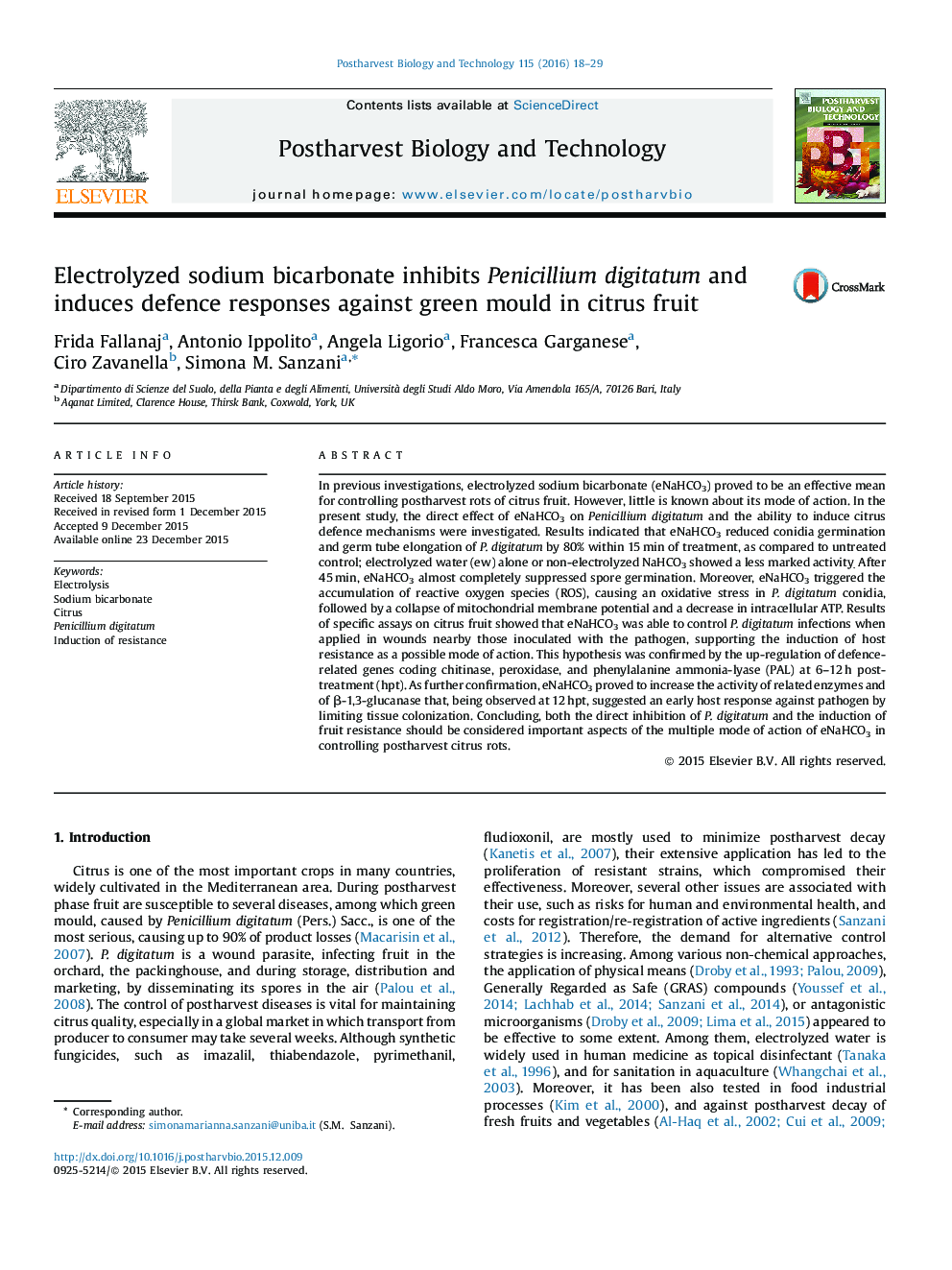| کد مقاله | کد نشریه | سال انتشار | مقاله انگلیسی | نسخه تمام متن |
|---|---|---|---|---|
| 4517767 | 1624979 | 2016 | 12 صفحه PDF | دانلود رایگان |

• Electrolyzed sodium bicarbonate (eNaHCO3) effectively controlled citrus green mould.
• eNaHCO3 inhibited conidia germination and germ tube elongation of P. digitatum.
• eNaHCO3 triggered accumulation of ROS, collapse of mitochondrial membrane potential and decrease in intracellular ATP.
• eNaHCO3 controlled infections even in absence of contact with P. digitatum.
• eNaHCO3 up-regulated genes coding chitinase, peroxidase, and PAL, increasing the activity of related enzymes.
In previous investigations, electrolyzed sodium bicarbonate (eNaHCO3) proved to be an effective mean for controlling postharvest rots of citrus fruit. However, little is known about its mode of action. In the present study, the direct effect of eNaHCO3 on Penicillium digitatum and the ability to induce citrus defence mechanisms were investigated. Results indicated that eNaHCO3 reduced conidia germination and germ tube elongation of P. digitatum by 80% within 15 min of treatment, as compared to untreated control; electrolyzed water (ew) alone or non-electrolyzed NaHCO3 showed a less marked activity. After 45 min, eNaHCO3 almost completely suppressed spore germination. Moreover, eNaHCO3 triggered the accumulation of reactive oxygen species (ROS), causing an oxidative stress in P. digitatum conidia, followed by a collapse of mitochondrial membrane potential and a decrease in intracellular ATP. Results of specific assays on citrus fruit showed that eNaHCO3 was able to control P. digitatum infections when applied in wounds nearby those inoculated with the pathogen, supporting the induction of host resistance as a possible mode of action. This hypothesis was confirmed by the up-regulation of defence-related genes coding chitinase, peroxidase, and phenylalanine ammonia-lyase (PAL) at 6–12 h post-treatment (hpt). As further confirmation, eNaHCO3 proved to increase the activity of related enzymes and of β-1,3-glucanase that, being observed at 12 hpt, suggested an early host response against pathogen by limiting tissue colonization. Concluding, both the direct inhibition of P. digitatum and the induction of fruit resistance should be considered important aspects of the multiple mode of action of eNaHCO3 in controlling postharvest citrus rots.
Journal: Postharvest Biology and Technology - Volume 115, May 2016, Pages 18–29